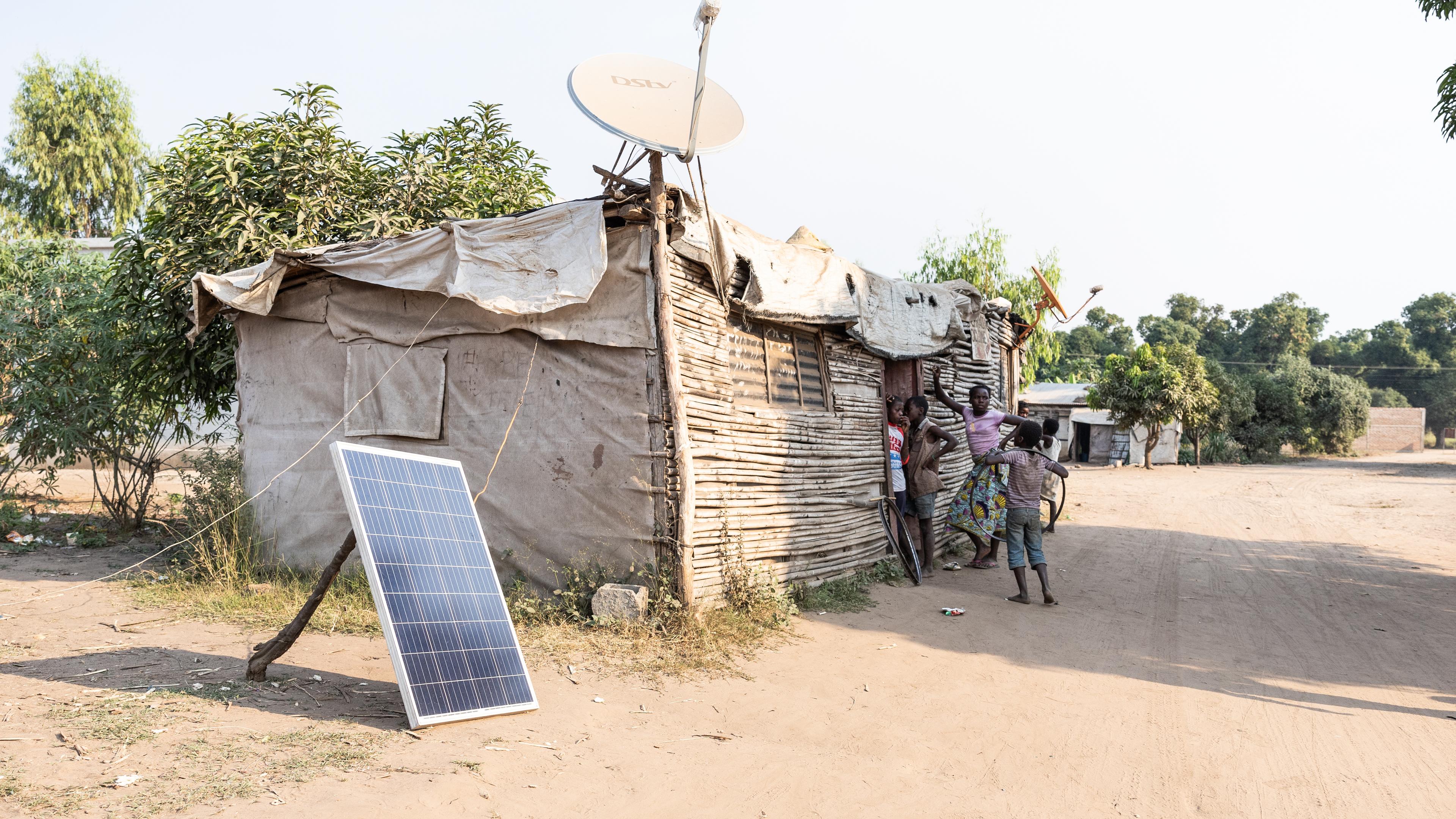Empowering displaced communities through energy mesh networks
 © IOM
© IOMWhat is the challenge?
Energy services are vital for safeguarding basic human well-being and dignity, which are fundamental ethical objectives of humanitarian aid. In particular, affordability has emerged as a significant issue to access energy, resulting in a majority of internally displaced people in Mozambique still living in darkness, relying on firewood and other sources like candles for lighting.
An IOM study reveals that access to household lighting remains considerably low in the resettlement sites, with 56% of households utilizing low-capacity solar lanterns, most of which were donated by humanitarian partners and IOM during emergency phases such as the 2019 cyclones. However, it has been reported that a majority of these systems are no longer functional due to damage and the absence of repair services in the sites. The remaining displaced population relies on alternative energy sources for lighting, such as battery-powered torches (28%), cell-phone torches (9%), firewood (4%), candles, and car batteries (1%). In Mozambique, the lack of energy access disproportionately affects women, as they bear the primary responsibility for gathering cooking fuel, predominantly firewood. This further exacerbates the burden on women, who already engage in unpaid labour like subsistence farming and firewood collection, leading to time poverty and health risks.
What is innovative about the project?
This project will explore the implementation of community mesh grids which have the potential to improve energy access in humanitarian settings. The grids consist of interconnected solar home systems (SHSs) that enable households to share power, thereby enhancing the energy capacity of the systems and benefiting more individuals. Mesh
grids can connect households that already possess SHSs with those who don't, but may have lamps or batteries, allowing them to purchase power from the mesh grid to charge their devices.
The project will follow a structured innovation process, starting with recognizing the issues and opportunities. Through a thorough needs assessment and market dialogues, IOM will understand the problem and explore potential solutions around mesh grids, energy communities and trading, blockain technology and mobile money. In the next phase, the project will focus on developing and implementing mesh grids using solar home systems. Collaborating with private sector companies specializing in off-grid energy solutions, we aim to create a community-led mesh grid that improves energy access and enables energy trading.
The innovation holds significant scaling potential. By leveraging community-led mesh-grid systems and integrating technologies such as blockchain and mobile payments, the project addresses key challenges in energy access for displaced communities. The scalability lies in the adaptable and replicable nature of the solution, which can be implemented in various displacement settings globally. To enhance scalability, IOM would focus on standardization, knowledge sharing, partnership development, advocacy and policy influence, as well as funding and resource mobilization.
What are the expected outcomes?
The goal is to improve energy access for internally displaced people in Mozambique and ensure sustainable energy for all that is reliable and affordable. Various delivery models have been tested so far with minimal impact and scale. This calls for more frugal innovations that are developed by the people who need them. The idea seeks to pilot a new model which provides a solution to these energy challenges. The idea places them at the heart of the project and develops an ecosystem to ensure long-lasting impact.
Who are the project partners?
The project is led by IOM in partnership with NORCAP.